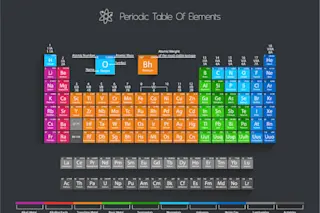Image Credit: Maximilian Laschon The periodic table just got a little bigger. The International Union of Pure and Applied Chemistry (IUPAC) has officially confirmed the existence of four new elements with atomic numbers 113, 115, 117 and 118, completing the seventh row, or period, of the periodic table.
The elements’ existence has been documented by researchers from Russia and the United States, as well as a separate team from Japan, for several years, but they awaited official review by the IUPAC to be formally accepted. Now that the confirmation process is complete, the researchers will submit permanent names for their elements. The IUPAC states that elements can be named after a mythological concept, a mineral, a place or country, a property or a scientist. The elements are currently known by placeholder names, such as the ever catchy ununseptium for element 117. The four newest discoveries will join other “superheavy” elements ...














